Small Game: Big Opportunity for Recruiting New Hunters
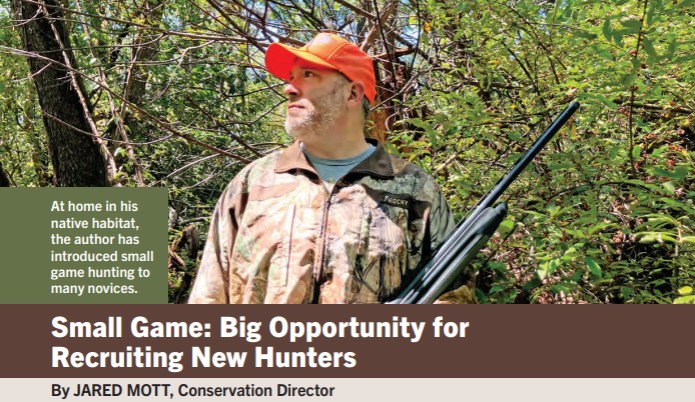
My office at League headquarters is awash in taxidermy. There’s a whole little flock of ducks and geese shot in the teeth of a cold north wind, a handful of whitetails pulled from hours on stand in rut funnels, a mule deer stalked in a wildfire-scarred canyon miles from any road and the fan of a wild turkey that had a zig for all my zags and whipped me so soundly for three hunts in a row that on morning number four, I almost slept in.
Today’s outdoor media tends to reflect my office. It generally showcases big game, like deer and turkeys, and hunts with specialized gear like those for waterfowl or technical mountain hunts for western game like wild sheep. There’s no problem with giving people what they want of course, and most hunters identify pretty readily with at least one of those buckets. But most hunters didn’t start by hunting deer or waterfowl, we started by hunting small game, like rabbits and squirrels. In 2022, the United States had about 14.5 million hunters—and states have reported slightly declining sales of hunting licenses in the years since. While there have been some encouraging signs of increased hunting participation, especially around the years of the Covid pandemic, long-term trends are unmistakenly going the wrong direction. With fewer hunters, conservation funding shrinks, and at the current rate of loss, hunters could represent only a small fraction of the population by 2050.
If we want to protect our hunting heritage and continue to fund conservation, we need to add more hunters to the mix. The R3 initiative—Recruit, Retain and Reactivate— encourages hunters to invite others into the field, mentor newcomers and help bring back those who’ve drifted away. That could be as simple as asking a coworker or neighbor to join you, showing them where to hunt, lending gear, walking them through license purchases or taking an old hunting buddy out for another season. And when it comes to welcoming new or returning hunters, few experiences are better than a small-game hunt.
Whitetail deer are the most popular and economically important game species in North America, but they’re not always the best entry point for beginners. Deer hunting demands long hours, cold mornings and patience in a tree stand— factors that can discourage new hunters.
Duck and goose hunts are notoriously uncomfortable, with best results coming on very cold and windy days as well as requiring investment in at least some specialized equipment like decoys and chest waders, though boats are often necessary as well. Spring mornings in the turkey woods are some of my very favorite days of the year. But trying to bag a wary gobbler—that has vision like a hawk and hearing like an owl—is a recipe for disappointment. Small-game hunting, on the other hand, offers an inviting, accessible introduction to the sport. Here’s why:
- It’s relaxed and social. Small-game hunts don’t require scent control or full camouflage. A new hunter doesn’t have to sit motionless for hours, can move around, talk, and hunt at reasonable hours. Squirrel, rabbit and dove hunting generally offer a laid-back atmosphere.
- Opportunities are abundant. While some big-game tags take years to draw, small-game hunting typically requires only a license and hunter safety card. Public lands that are crowded during deer season often have room to spare for rabbit or squirrel hunting, and landowners are generally more open to granting access for small game.
- Minimal gear is needed. A coat, boots, a license and a simple firearm are enough. Outfitting a newcomer for small game is affordable and often possible with spare gear you already own. Unlike elk or high-mountain hunts, there’s no need for expensive optics or technical equipment.
- Meat care is simple. Processing a deer can intimidate beginners, but cleaning a rabbit or squirrel takes just minutes with a sharp knife. Small-game meat is easy to cook, versatile in recipes and doesn’t require a butcher or costly processing fees.
For all these reasons, small-game hunting is one of the best ways to bring new hunters into the fold—and one of the most effective ways to keep our hunting tradition alive.
One of my favorite ways to eat small game is in a fricassee, which is a hybrid cooking method halfway between a sauté (in which no liquid is added) and a stew (which contains added liquids). Meat is browned in fat and then served in a sauced flavored with the cooking stock. You can use pretty much any meat in a fricassee; outside of the hunting context, domestic chicken and veal are often used in this preparation. I usually use squirrel or rabbit and the recipe shown here is a family favorite.
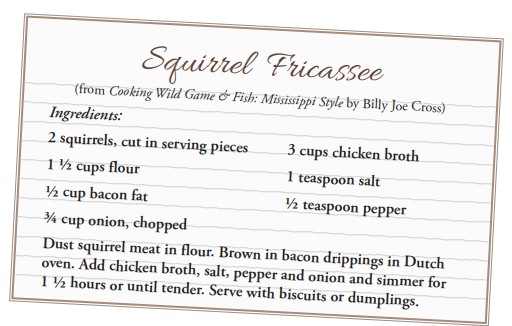
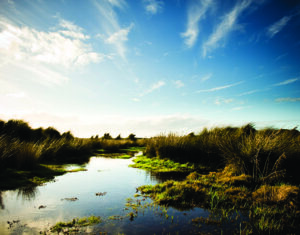
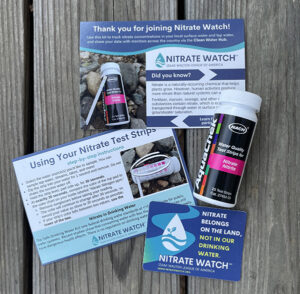 Your kit will include a bottle containing 25 nitrate test strips which you can use to test your water source(s) throughout the year. You’ll also receive postcards explaining how to use your nitrate test strips and how to share your Nitrate Watch results on the Clean Water Hub.
Your kit will include a bottle containing 25 nitrate test strips which you can use to test your water source(s) throughout the year. You’ll also receive postcards explaining how to use your nitrate test strips and how to share your Nitrate Watch results on the Clean Water Hub.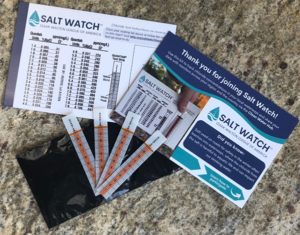 Your kit will include four test strips so you can test your waterway throughout the season. You’ll also receive a chart to help you interpret your results and a postcard with instructions for completing a Salt Watch test and reporting your findings.
Your kit will include four test strips so you can test your waterway throughout the season. You’ll also receive a chart to help you interpret your results and a postcard with instructions for completing a Salt Watch test and reporting your findings.